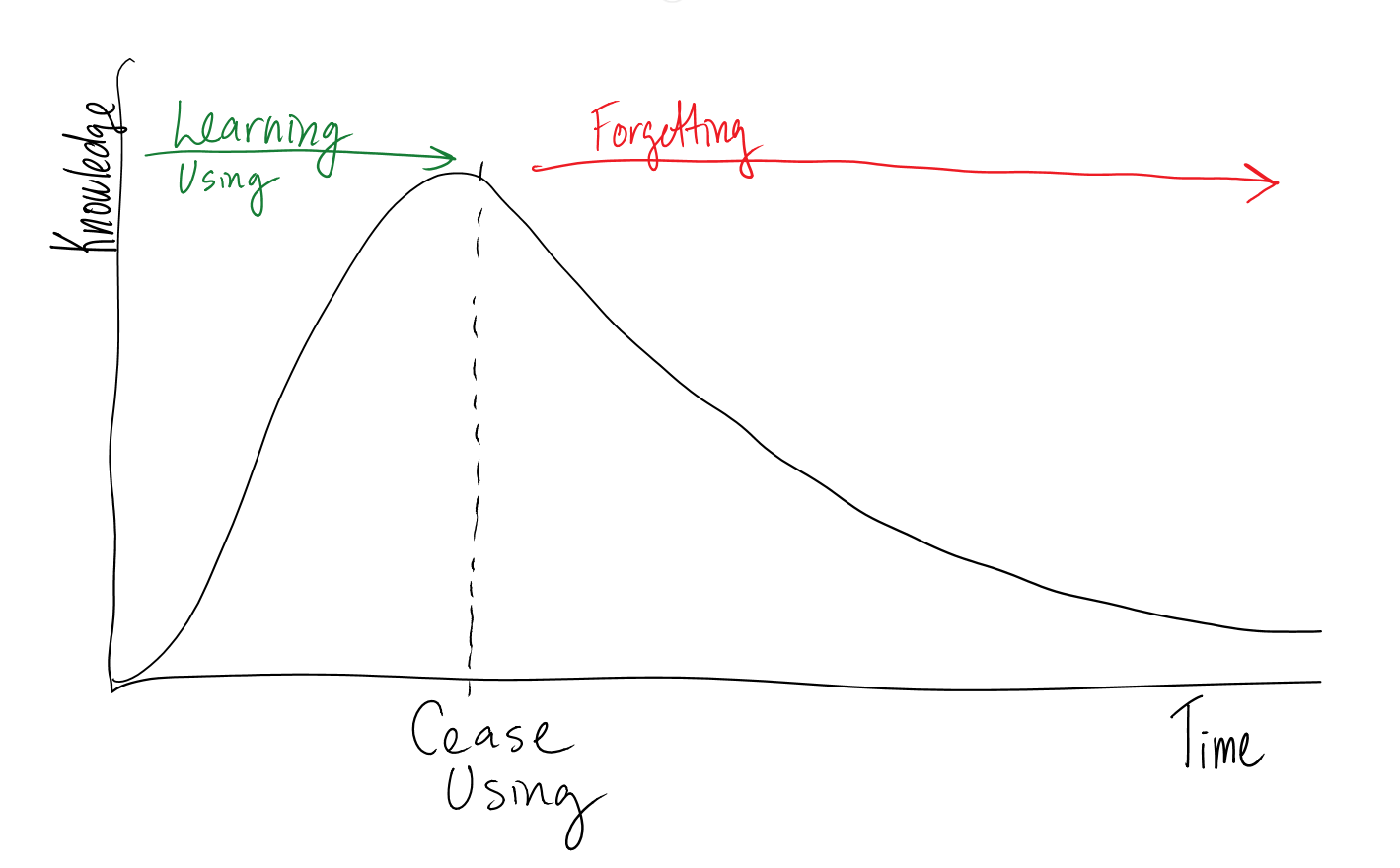Anyone with a modicum of passion for learning can become overwhelmed managing all the directions their mind would like to take them. You need a strategy if you want to manage your learning. Otherwise, your learning will likely manage you.
Take a minute and think about three learning situations from the last month. Situations where you acquired knowledge. For each of these situations, jot down a few notes about the following:
What did you learn?
How did you use it?
What have you already forgotten?
What benefit did this knowledge provide?
Did anything stand out about your answers to these questions?
Have you ever invested a significant amount of learning only to never use the knowledge? Of that knowledge, what do you still recall today?
How about something you recently learned and put to use? What of that knowledge still remains in your mind? What have you forgotten?
How about something you learned and put to use several years ago. Something you haven’t used since. If you had to use it again, how much of it would you have to relearn?
Have you ever applied something new only to find that it wasn’t that helpful? Perhaps your current technique was sufficient in comparison.
Knowledge
When we learn we acquire knowledge, hopefully. When we apply what we’re learning we acquire even more knowledge. In fact when we apply it, we acquire it at a much faster rate. But once we’re done learning or we cease using it, we begin to forget.
With the overwhelming possibilities for learning these days: blogs, articles, interviews, videos, books, seminars, teleconferences, webinars, conferences, etc… It’s important to have a strategy to manage one’s learning.
With awareness, learning can become a multifaceted approach that pays dividends.
Instead of a cycle of learn and lose:
You can create an upward trend:
A multifaceted approach can be built from the questions above and recognizing the different circumstances within which you can learn. Then, optimizing those situations to learn just enough to build your upward trend. This way you save the time you might have wasted and invest it in other learning opportunities.



2 comments for “Strategic learning”